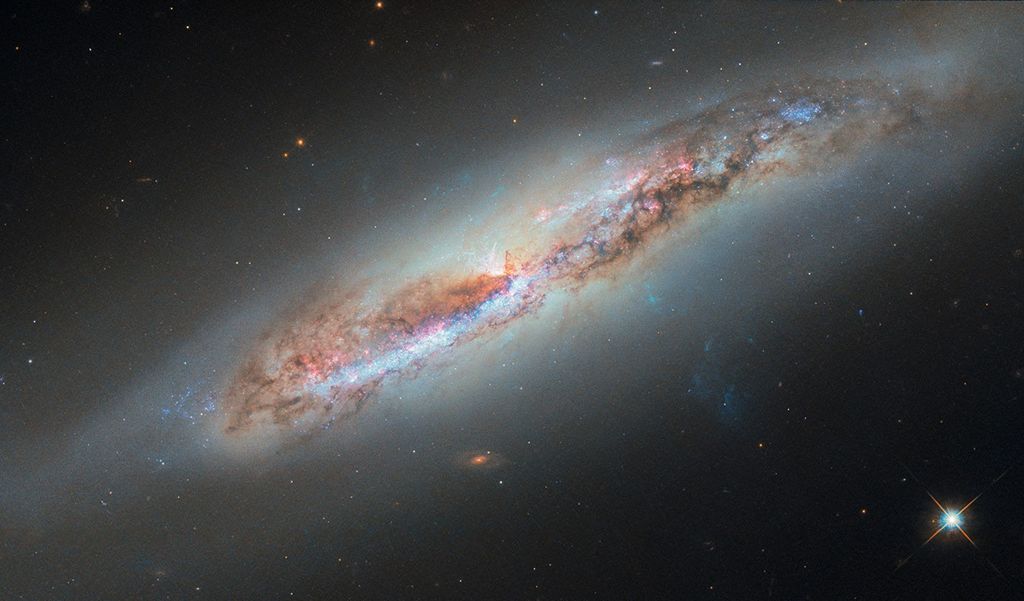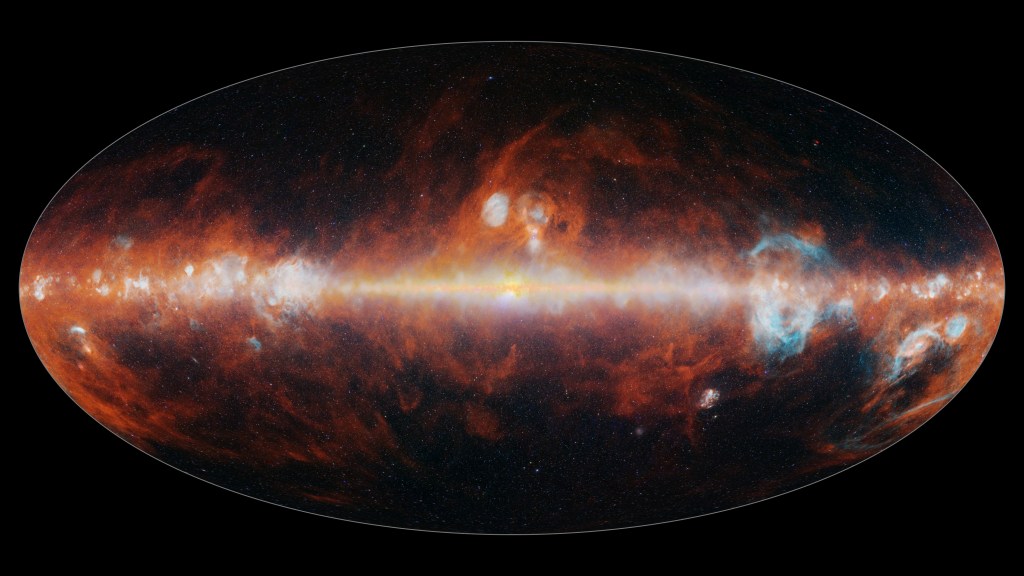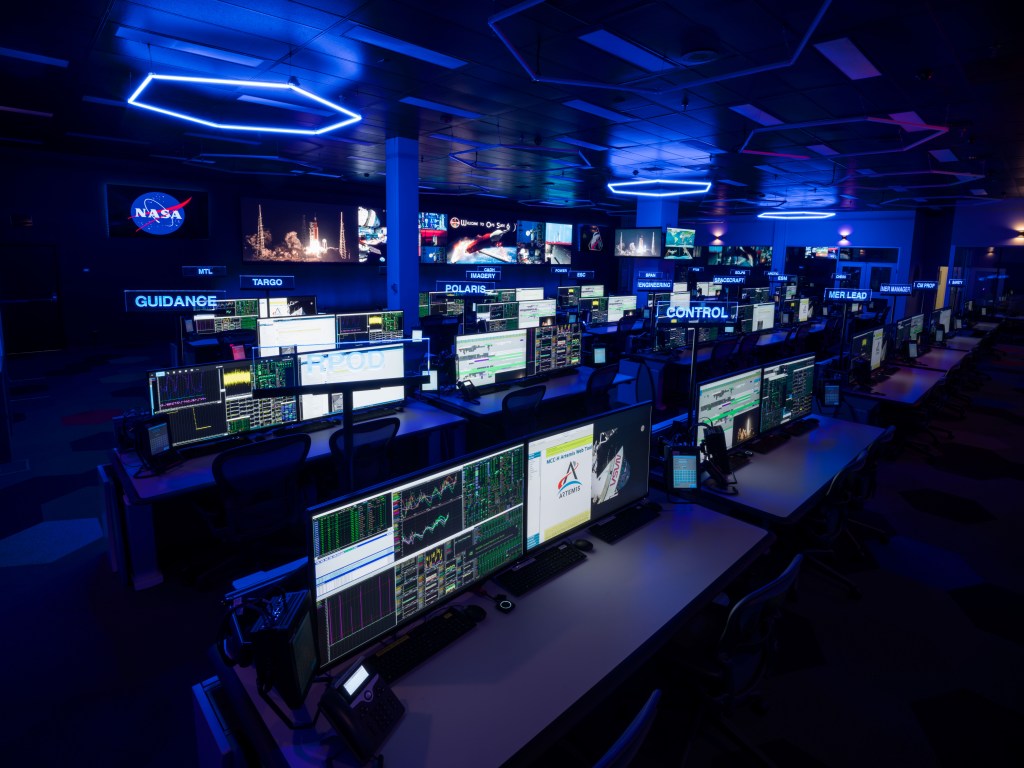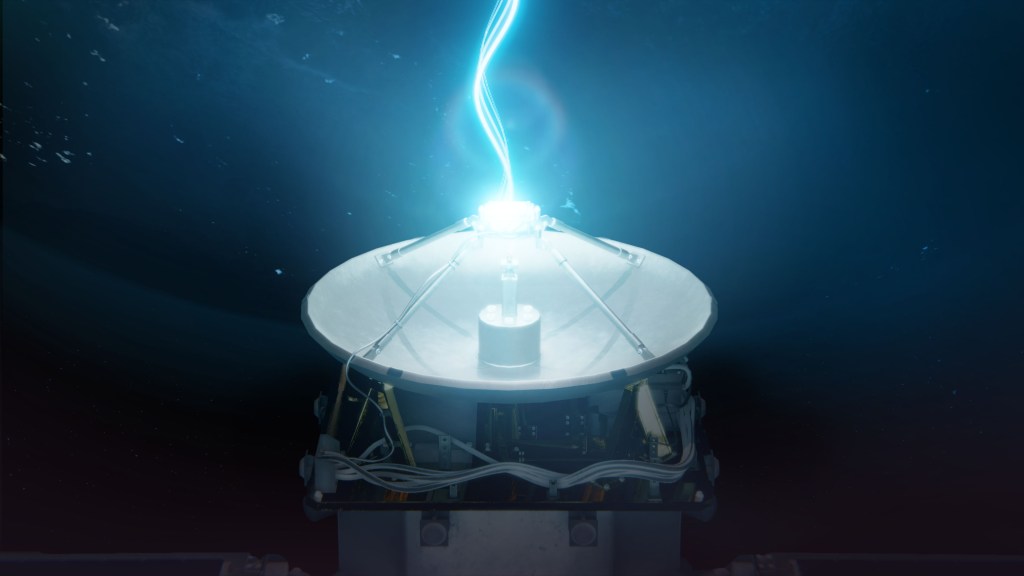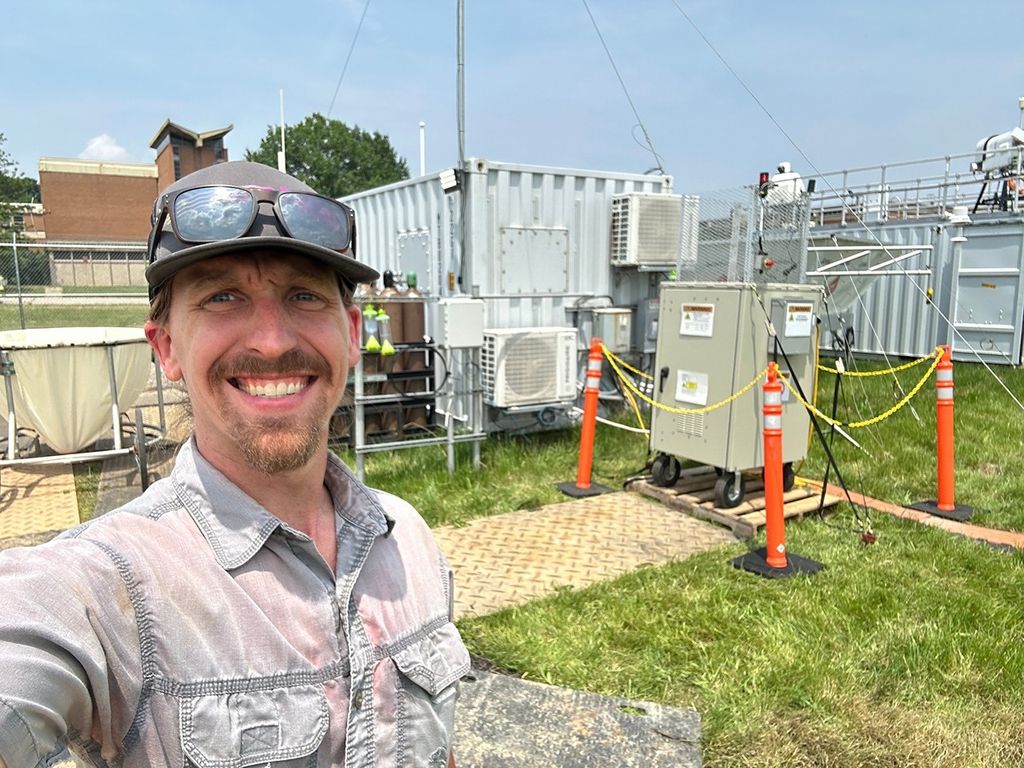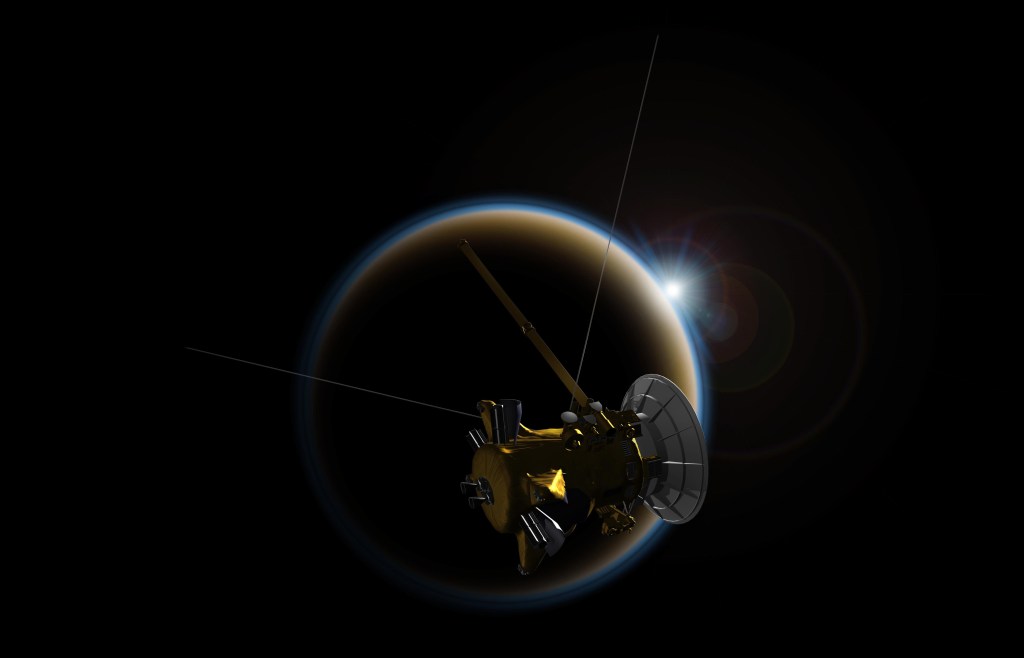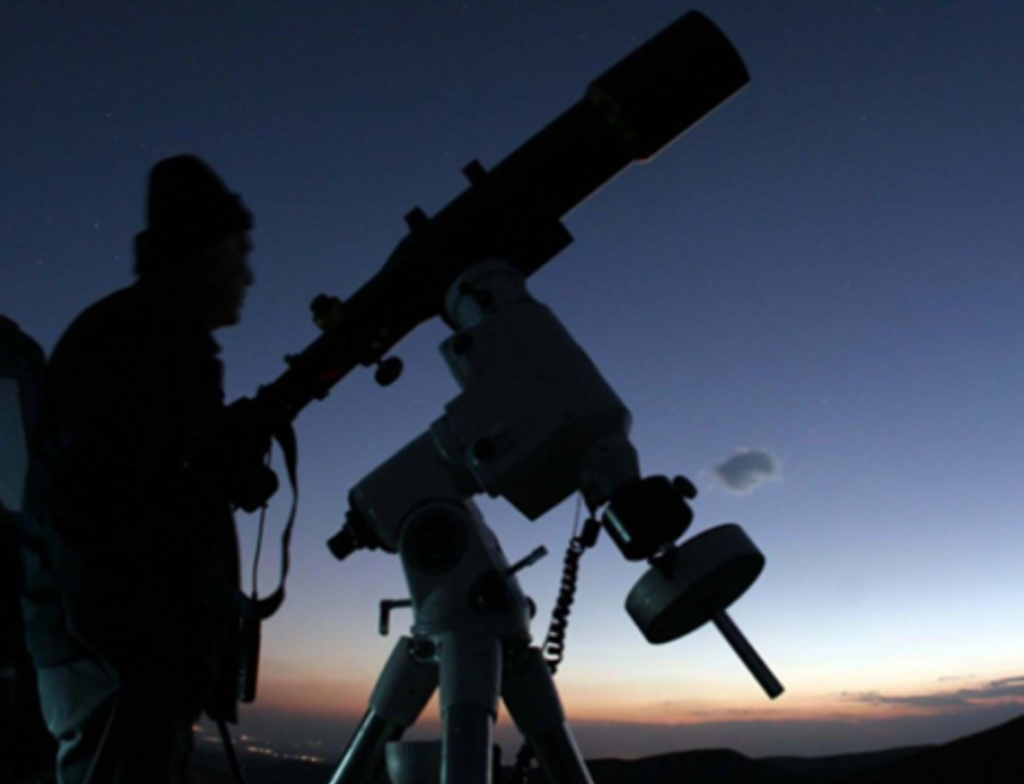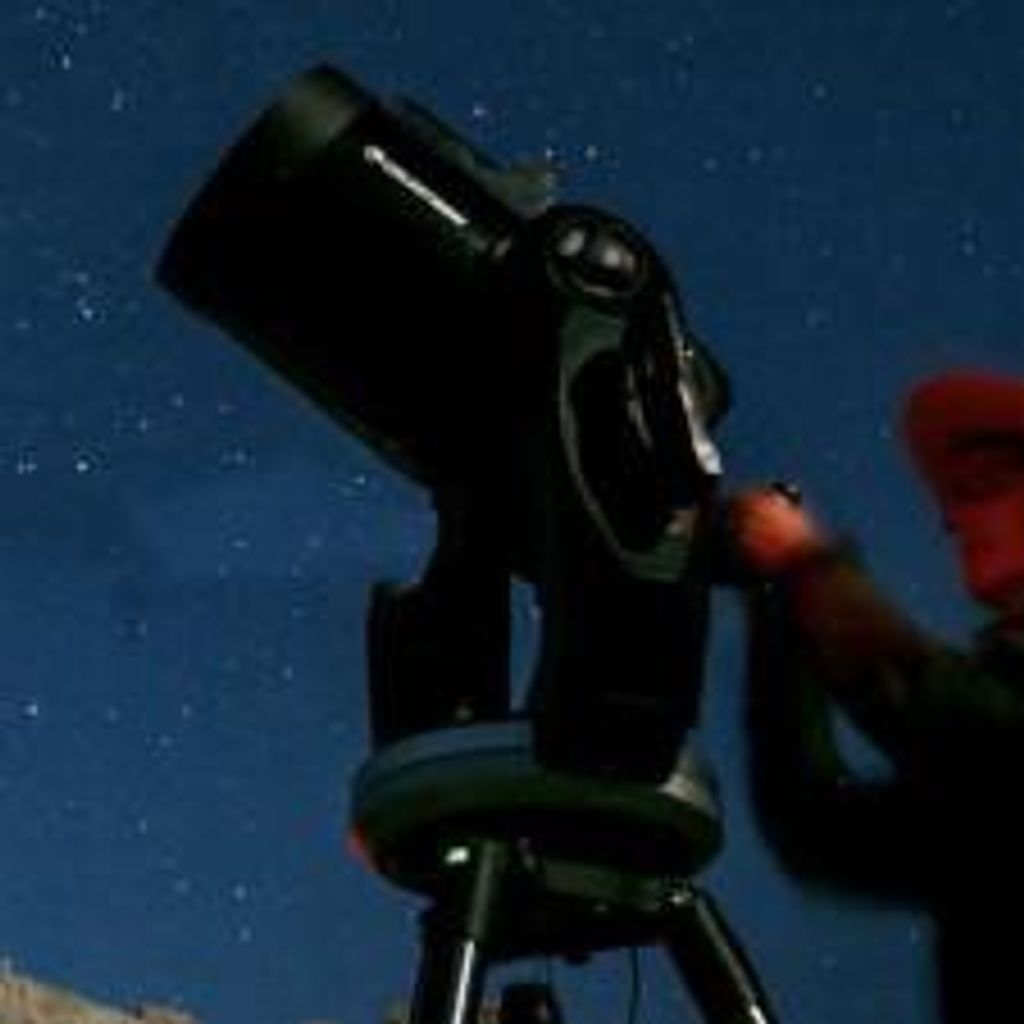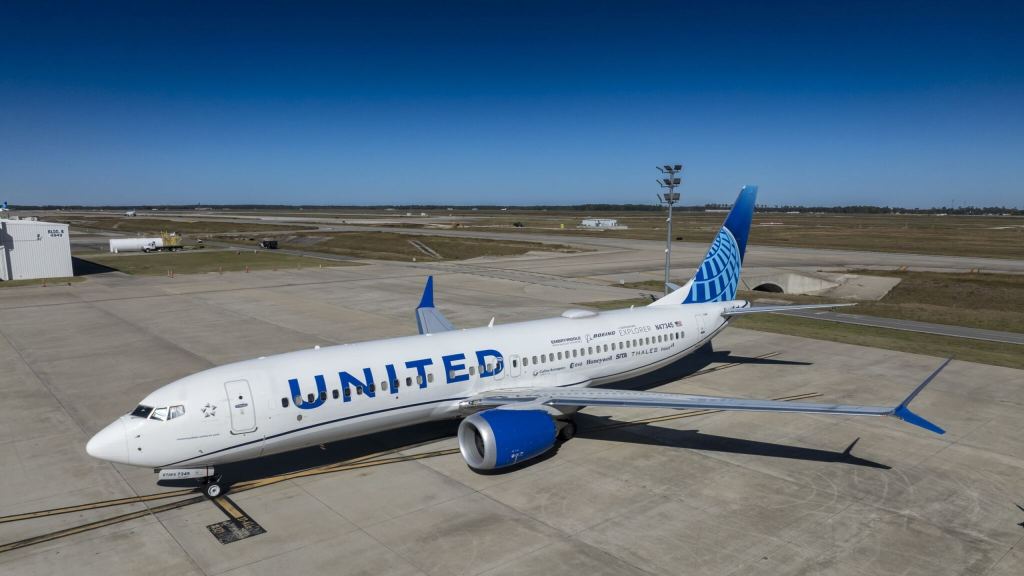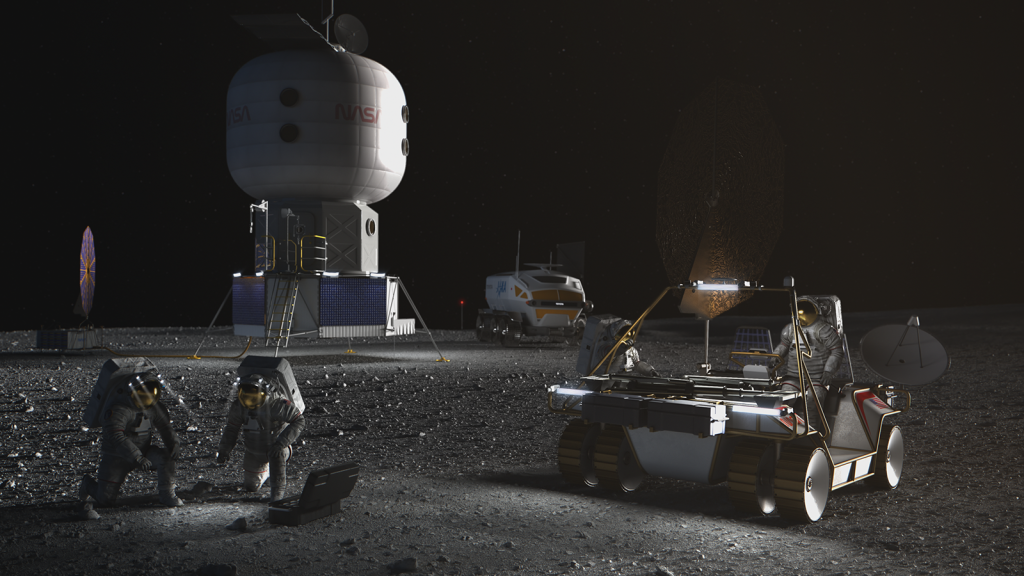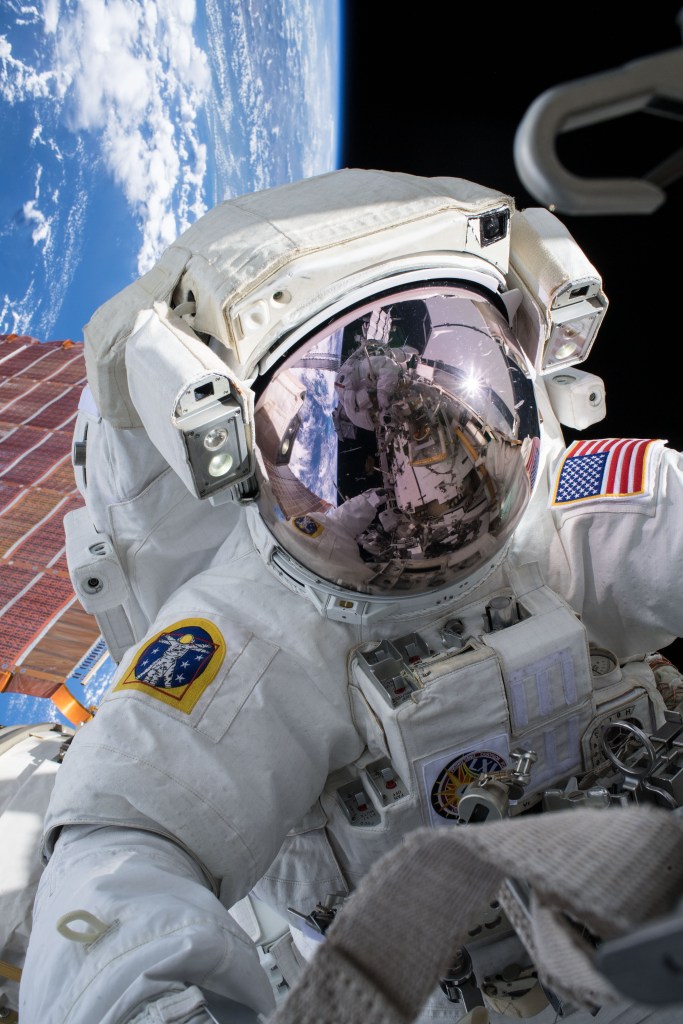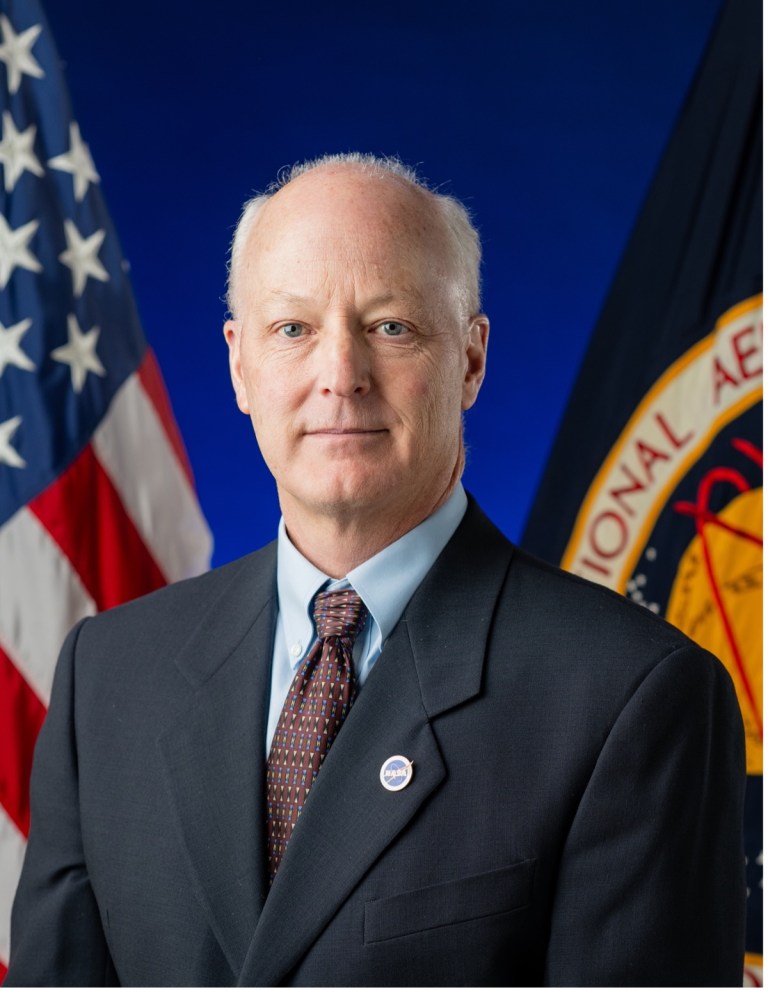
Brian F. Gore
Deputy Element Scientist, Human Research Program, Human Factors and Behavioral Performance
Affiliation– NASA Ames Research Center
Division– Human Systems Integration Division (TH)
Phone– 650-224-1208
Email– brian.f.gore@nasa.gov
Mail Stop– 262-4
Professional Bio
Brian Gore has been applying his human factors expertise to address agency needs in various roles since joining NASA in 1998, using simulation and computational modeling methodologies.
Brian currently serves as scientific advisor on research for inclusion across several scientific disciplines. He coordinates with NASA program managers and scientists across centers to plan and integrate tasks that balance resources with scientific goals and objectives. Brian joined HRP’s Space Human Factors Engineering portfolio in 2006, studying crew workload for long-duration mission operations for Project Constellation. Brian moved from research into portfolio management in 2014, then back into scientific management in 2020.
Brian received a bachelor’s degree in Psychology from Queen’s University in Kingston, Ontario, a master’s degree in Computer Systems and Human Factors Engineering from San Jose State University in California, and a doctorate in Mechanical and Industrial Engineering from the University of Toronto. Brian serves on several international standards and journal review committees.
Education
Ph.D., Mechanical and Industrial Engineering, University of Toronto.
M.S., Human Factors/Ergonomics, San Jose State University, San Jose, California.
B.A. (Honours), Psychology, Queen’s University, Kingston, Ontario.
Professional Experience
01/2017-present – U.S. Government Civil Servant – National Aeronautics and Space Administration
01/2014-01/2017 – IPA (SJSU) to National Aeronautics and Space Administration – U.S. Government
01/1998-01/2014 – Senior Research Associate, San Jose State University Research Foundation @ NASA Ames Research Center
09/1997-12/1997 – San Jose State University Research Foundation
Research Interests
Research in understanding and mitigating the risks that future missions to explore the Moon, Mars, and beyond may pose to the behavioral health and performance of astronauts, helping to ensure that crews can carry out mission tasks.
Human Performance and System Modeling
Awards/Honors
2019 NASA Group Achievement Award – NASA TLX for iOS
2019 Exceptional Space Act Award – for the development of a significant technical contribution that has been determined to be of exceptional value in the conduct of an aeronautical or space activity of NASA.
2018 FLC Far West Software Award – Outstanding Technology Development for the NASA TLX for iOS
2018 1st Runner up for the 2018 NASA Software of the Year for the NASA TLX for iOS
NASA SBIR Honor Award 2018 for dedication, hard work and drive to go beyond the call of duty as a Subtopic Manager.
NASA Human Research Program Peer Award for outstanding contributions to HRP (10/2015)
Society of Automotive Engineers 2005 Arch T. Colwell Merit Award (04/2007)
AIAA/IEEE – Best Paper of Session: The AIAA/IEEE 19th Digital Aviation Systems Conference (DASC) (06/2000)
USA/Europe ATM Best Paper of Conference: Third Annual USA/Europe Air Traffic Management R&D Seminar, (06/2000)
Society of Automotive Engineers Significant Technical Paper Contribution Awards:
- 8th Annual SAE Digital Human Modeling for Design and Engineering Symposium 2005;
- 3rd Annual SAE Digital Human Modeling for Design and Engineering 2000;
- 2nd Annual SAE International Conference and Exposition – Digital Human Modeling for Design and Engineering 1999.
Scholarships/Monetary Awards
NASA Honor Award –NASA TLX for iOS – 2019
NASA Superior Accomplishment Award – 2019 – $1500
Software of the Year – 2018 – $9800
National Aeronautics and Space Administration – 2017 – $2000
The San Jose State University – 2014 – Honorarium – $2000
The San Jose State University – 2007 – Honorarium – $1000
The University of Toronto, School of Graduate Studies 2003 – $26000 (4 year fellowship)
Natural Sciences Engineering Research Council of Canada (NSERC)/Canadian Graduate Scholarship 2003 $105,000 (3 year scholarship). Won award but declined it.
Defence Research and Development of Canada (DRDC) Supplemental Award 2003 $15,000 (3 year scholarship supplement).
Publications
Rahill, K.M., Mulavara, A.P., George, K, Gore, B.F., and Whitmire, A.M. (2025, May). Increasing fidelity in lunar and martian analogs for behavioral health and performance research, Frontiers in Space Technologies (May), DOI 10.3389/frspt.2025.1505823.
Gore, B.F., Vera, A., Marquez, J, Holden, K., Amick, R., Dempsey, D. & Munson, B. (2021). NASA evidence report: Risk of inadequate Human System Integration Architecture (HSIA). Human Research Program, Human Factors and Behavioral Performance Element, Johnston Space Center, TX: NASA. https://humanresearchroadmap.nasa.gov/evidence/reports/Risk%20of%20Inadequate%20Human-System%20Integration%20Architecture%20approved.pdf
Gore, B.F. (2018). Workload and fatigue: chapter overview. In B. Kanki, J-F Clervoy, & G. Sandal (Eds.), Space safety and human performance (pp.54), Oxford, MA: Elsevier Science.
Gore, B.F., Casner, S.M, & Wickens, C.D. (2018). Workload and human performance. In B. Kanki, J-F Clervoy, & G. Sandal (Eds.), Space safety and human performance (pp.54-70), Oxford, MA: Elsevier Science.
Hooey, B.L., Kaber, D.B, Adams, J.A., Fong, T., & Gore, B.F. (2018). The underpinnings of workload in unmanned vehicle systems. IEEE Transactions on Human-Machine Systems, 48(5), 452-467. ISSN 2168-2291.
Gore, B.F. (2017). Minimizing human risk: human performance models in the human factors and behavioral performance element. In D.N. Cassenti (Ed.), Advances in Human Factors in Modeling and Simulation. New York: Springer.
Hooey, B.L., Toy, J, Carvalho, R.E., Fong, T., & Gore, B.F. (2017). Modeling operator workload for the resource prospector lunar rover mission. In D.N. Cassenti (Ed.) Advances in Human Factors in Modeling and Simulation. New York: Springer.
Marquez, J.J. & Gore, B.F. (2017). Measuring safety and performance in human-automation systems: special issue commentary. In Human Factors: The Journal of the Human Factors and Ergonomics Society.
Gore, B.F. (2014). A task analytic process to define future concepts in aviation. In V. Duffy (ed.), DHM2014, 236-246, Lecture Notes in Computer Science Volume 8529, Switzerland: Springer.
Gore, B.F., & Milgram, P. (2013). A validation approach for complex NextGen air traffic control human performance models. Digital Human Modeling and Applications in Health, Safety, Ergonomics, and Risk Management. Healthcare and Safety of the Environment and Transport, Lecture Notes in Computer Science Volume 8025, 2013, pp 28-37.
Gore, B.F., Hooey, B.L., Mahlsted, E., & Foyle, D.C. (2013). Extending validated human performance models to explore NextGen Concepts. In S. Landry (ed.): Advances in Human Aspects of Aviation, pp. 407-416, Boca Raton, FL: CRC Press.
Gore, B.F. (2011). Man-machine Design and Analysis System (MIDAS) v5: Augmentation, motivations, and directions for aeronautics applications. In P. C. Cacciabu, M. Hjalmdahl, A. Luedtke and C. Riccioli (eds.) the Human Modeling in Assisted Transportation 2011, 43-55, Heidelberg: Springer-Verlag.
Gore, B. F., Hooey, B. L., Wickens, C. D. & Scott-Nash, S. (2011). A Computational Implementation of a Human Attention Guiding Mechanism in MIDAS v5.. In V. G. Duffy (ed.), HCI (11), (pp. 237-246): Springer. ISBN: 978-3-642-02808-3.
Hooey, B.L., Gore, B.F., Wickens, C.D., Scott-Nash, S., Socash, C., & Salud, E. (2011). Modeling situation awareness in the advanced flight deck. In P. C. Cacciabu, M. Hjalmdahl, A. Luedtke and C. Riccioli (eds.) the Human Modeling in Assisted Transportation 2011, 207-213, Heidelberg: Springer-Verlag.
Wickens, C.D., Hooey, B.L., Gore, B.F., Sebok, A., & Koenecke, C. (2009). Identifying Black Swans in NextGen: Predicting Human Performance in Off-Nominal Conditions. Human Factors, 51(5), 638-651.
Gore, B.F. (2009). Chapter 32: Human performance: Evaluating the cognitive aspects. In V. Duffy (ed.), Handbook of digital human modeling, NJ: Taylor and Francis.
Gore, B.F. & Smith, J.D. (2006). Risk assessment and human performance modeling: the need for an integrated approach. In K.A. Malek (ed.) International Journal of Human Factors of Modeling and Simulation, 1(1), 119-139.
Gore, B.F., & Jarvis, P.A. (2006). New integrated modeling capabilities: MIDAS’ recent behavioral enhancements. SAE Transactions – Journal of Passenger Cars – Electronic and Electrical Systems, Warrendale: SAE, Inc.
Gore, B.F., Verma, S., Corker, K., Jadhav, A. & Guneratne, E. (2004). Chapter 5: Human performance modeling predictions in reduced visibility operation with and without the use of synthetic vision system operations. In D.C. Foyle, A. Goodman & B.L. Hooey (Eds.), Proceedings of the 2003 Conference on Human Performance Modeling of Approach and Landing with Augmented Displays, (NASA/CP-2003-212267), 119-142. Moffett Field, CA: NASA.
Gore, B.F. (2002). An emergent behavior model of complex human-system performance: An aviation surface related application. VDI Bericht 1675, 313-328, Düsseldorf, Germany: VDI Verl.
Gore, B.F. (2002). Human performance cognitive-behavioral modeling: A benefit for occupational safety. In B. Chase & W. Karwowski (Eds.), International Journal of Occupational Safety and Ergonomics (JOSE), 8 (3), 339-351.
Gore, B.F., & Corker, K.M. (2002). Increasing Aviation Safety Using Human Performance Modeling Tools: An Air Man-machine Integration Design and Analysis System Application. In M.J. Chinni (eds.) Simulation Series: The Symposium on Military, Government, & Aerospace, 34 (3), 183-188, San Diego: Simulation Councils, Inc.
Gore, B.F. (2001). The study of distributed cognition in free flight: A human performance modeling tool structural comparison. SAE Transactions – Journal of Passenger Cars: Mechanical Systems, 109 (6), 2291-2296, Warrendale: SAE Inc.
Gore, B.F., & Corker, K.M. (2001). Human performance modeling: A cooperative and necessary methodology for studying occupational ergonomics. In A. Bittner, P. Champney and S. Morrissey (eds.) Ergonomics Principles, Models and Methodologies: Advances in Occupational Ergonomics and Safety, 4, 110-119, The Netherlands: IOS Press.
Gore, B.F. & Corker, K. (2000). System interaction in free flight: A modeling tool cross- comparison. Factors Journal, Vol 1, Issue 4. SAE Transactions – Journal of Aerospace, 108 (1), 409-424, Warrendale: SAE Inc.
Lee, J.D., Gore, B.F., & Campbell, J.L. (1999). Display alternatives for in-vehicle warning and sign information: Message style, location, and modality. In B. Kantowitz (ed), Transportation Human Factors, 1(4) 347-375, NY: LEA.
Conference Proceedings
Robinson, S.K., Gore, B.F., & Whitmire, A.M. (2021). Human Capabilities Assessments for Autonomous Missions: A Multi-Team Research Effort to Reduce Risk in the Human-System Integration Architecture for Future Deep-Space Missions. Presented at the 23rd Humans in Space, April 5-8, 2021. https://iaaspace.org/event/23rd-iaa-humans-in-space-symposium-2021/.
Whitmire, A.M., Gore, B.F., Vessey, B., & Williams, T.J. (2021). SIRIUS Project, Space Psychology and Human Factors in Interplanetary Missions, Mars Exploration. Presented at the 23rd Humans in Space, April 5-8, 2021. https://iaaspace.org/event/23rd-iaa-humans-in-space-symposium-2021/.
Fong, T., Gore, B.F., Hooey, B.L., Kaber, D., Adams, J. (May, 2017). Developing user interface designs for remote operations based on predictions of human workload. Final Report, Moffett Field, CA: NASA Ames Research Center.
Gore, B.F. (2017). Minimizing Human Risk: Human Performance Models in that Human Factors and Behavioral Performance Element. In the 8th International Conference on Applied Human Factors and Ergonomics (AHFE), July 2017.
Hooey, B.L., Toy, J., Carvalho, R.E., Fong, T., & Gore, B.F. (2017). Modeling Operator Workload for the Resource Prospector Lunar Rover Mission. In the 8th International Conference on Applied Human Factors and Ergonomics (AHFE), July 2017.
Gore, B.F. (2016). The Man-machine Integration Design and Analysis System (MIDAS) Software Training Documentation. NASA TM – 2016-219478. Moffett Field, CA: NASA Ames Research Center.
Gore, B.F. (2016). Minimizing Human Risk: Human Performance Models in that Space Human Factors and Behavioral Health and Performance Elements. In the 7th International Conference on Applied Human Factors and Ergonomics (AHFE), July 2016.
Gore, B.F. (2016). Human-Robot Interaction in High Vulnerability Domains. Presented at the Institute of Industrial Engineering Research Conference (ISERC) 2016. May 21-24, Anaheim, CA.
Gore, B.F. (2015). Modeling, Tool Development and Testing, Empirical Research, and Validation Results of the Space Performance Research Integration Tool: Panel session. In the proceedings of the 2015 International Annual Human Factors and Ergonomics Society Meeting, October 22-25, Los Angeles, CA.
Gore, B.F. (2015). National Aeronautics and Space Administration: Space, Aeronautics, and Scientific Research. Invited keynote presentation. 1st LORIA-NASA Workshop on Safety Critical Human-System Integration in the Aerospace, Defense, and Medical Operational Domains, Loraine Laboratory of Research in Computer Science and its Applications (LORIA), Nancy, France, June 8.
Gore, B.F. (2015). An Overview of the Human Systems Integration Division. 1st LORIA-NASA Workshop on Safety Critical Human-System Integration in the Aerospace, Defense, and Medical Operational Domains, Loraine Laboratory of Research in Computer Science and its Applications (LORIA), Nancy, France, June 11.
Fanchiang, C., Marquez, J.J., Gore, B.F., & Klaus, D. (2015). Survey and assessment of human performance evaluation methods applicable to spacecraft design. 2015 IEEE Aerospace, IEEE Catalogue #: 2077 3, ISBN 978-1-4799-5379-0, USA: IEEE Aerospace.
Wolter, C.A., & Gore, B.F. (2015). A validated task analysis of the single pilot operations concept. NASA TM-2015-218480. Moffett Field, CA: NASA Ames Research Center.
Gore, B.F. (2014). Using empirical research and human performance modeling to predict astronaut performance in long duration space missions. In the proceedings of the 2014 International Annual Human Factors and Ergonomics Society Meeting, October 27-30, Chicago, IL.
Gore, B.F., Hooey, B.L., Wickens, C.D., Socash, C., Gacy, A.M., Brehon, M., Gosakan, M, & Foyle, D.C. (in progress). The MIDAS workload model (HCSL-11-02). Moffett Field, CA: NASA Ames Research Center.
Gore, B.F., & Wolter, C.A. (June 22-29, 2014). A task analytic process to define future concepts in aviation. In Digital Human Modeling. Applications in Health, Safety, Ergonomics and Risk Management Lecture Notes in Computer Science Volume 8529, 2014, pp 236-246.
Wolter, C.A., & Gore, B.F. (2013). ASP/CTD/SPO Task Summary Report: Single Pilot Operations (SPO) ConOps-related gaps and research issues identified by analysis of SPO Pilot and Controller tasks, technologies and procedures. HCSL Technical Report (HCSL-13-07). Human Centered Systems Laboratory (HCSL), Moffett Field, CA: NASA Ames Research Center.
Gore, B.F., Hooey, B.L., Haan, N., Socash, C., Mahlstedt, E.A., & Foyle, D.C. (2013). A validated set of MIDAS v5 task network model scenarios to evaluate NextGen Closely Spaced Parallel Operations concepts. HCSL Technical Report HCSL-13-03. Human Centered Systems Laboratory (HCSL), Moffett Field, CA: NASA Ames Research Center.
Hooey, B.L., Gore, B.F., Mahlstedt, E.A., & Foyle, D.C. (2013). Evaluating NextGen Closely Spaced Parallel Operations concepts with validated human performance models: Flight deck guidelines.NASA TM-2013-216506. Moffett Field, CA: NASA Ames Research Center.
Gore, B.F., Hooey, B.L., Mahlstedt, E.A., & Foyle, D.C. (2013). Evaluating NextGen Closely Spaced Parallel Operations concepts with validated human performance models: Scenario development and results. NASA TM-2013-216503. Moffett Field, CA: NASA Ames Research Center.
Wickens, C.D., Sebok, A., Peters, S., Small, R., Keller, J., Hutchins, S., Algarin, L., Gore, B.F., Hooey, B.L., & Foyle, D.C. (2013). Modeling and evaluating pilot performance in NextGen: Review of and recommendations regarding pilot modeling efforts, architectures, and validation studies. (NASA/TM-2013-216504). Moffett Field, CA: NASA Ames Research Center.
Gore, B.F., Hooey, B.L., Mahlstedt, E., & Foyle, D.C. (2012). Evaluating NextGen Closely Spaced Parallel Approach Concepts with Validated Human Performance Models: Model Development, Implementation, and Results. In Human Centered Systems Lab (Ed.), HCSL Technical Report (HCSL-12-04). Moffett Field, CA: NASA Ames Research Center.
Gore, B.F., Hooey, B.L., & Foyle, D.C. (2012). A Validated Set of MIDAS v5 Task Network Model Scenarios to Evaluate NextGen Closely Spaced Parallel Approach Concepts, In Human Centered Systems Lab (Ed.), HCSL Technical Report (HCSL-12-03). Moffett Field, CA: NASA Ames Research Center.
Gore, B.F., Hooey, B.L., Mahlstedt, E., & Foyle, D.C. (2012). Extending validated human performance models to explore NextGen Concepts. In the 4th International Conference on Applied Human Factors and Ergonomics (AHFE), July 2012.
Gore, B.F., Hooey, B.L., Mahlstedt, E., & Foyle, D.C. (2012). Evaluating NextGen Closely Spaced Parallel Approach Concepts with Validated Human Performance Models Flight Deck Guidelines (Part 2 of 2), In Human Centered Systems Lab (Ed.), HCSL Technical Report (HCSL-12-02). Moffett Field, CA: NASA Ames Research Center.
Hooey, B.L., Gore, B.F., Mahlstedt, E., & Foyle, D.C. (2012). Evaluating NextGen Closely Spaced Parallel Approach Concepts with Validated Human Performance Models Flight Deck Guidelines (Part 1 of 2), In Human Centered Systems Lab (Ed.), HCSL Technical Report (HCSL-12-01). Moffett Field, CA: NASA Ames Research Center.
Wickens, C.D., Sebok, A., Gore, B.F., & Hooey, B.L. (2012). Predicting pilot error in NextGen: Pilot performance modeling and validation efforts. In the 4th International Conference on Applied Human Factors and Ergonomics (AHFE), July 2012.
Sebok, A., Wickens, C., Gacy, M., Brehon, M., Scott-Nash, S., Sarter, N., Li, H., Gore, B.F., & Hooey, B.L. MIDAS-FAST: A modeling and simulation-based tool to predict operator performance in human-robotic automation systems. In the 4th International Conference on Applied Human Factors and Ergonomics (AHFE), July 2012.
Wickens, C.D., Sebok, A., Peters, S., Small, R., Keller, J., Hutchins, S., Algarin, L., Gore, B.F., Hooey, B.L., & Foyle, D.C. (2011). Modeling and evaluating pilot performance and human error potential in NextGen: Phase 1 interim report. In Human Centered Systems Lab (Ed.), HCSL Technical Report (HCSL-11-03). Moffett Field, CA: NASA Ames Research Center.
Gore, B.F., & Ahumada, A. (2011). Workload Tools and Guidelines. HRP SHFE Final Task Book Report, Washington, DC: National Aeronautics and Space Administration, Sept 2011.
Gore, B.F., Ahumada, A., Macramalla, S., & Oyung, R. (2011). Workload considerations in long duration space operations: A system perspective (addendum). Space Human Factors Engineering, Workload DRP, HRP Final Report: Workload Tools and Guidelines, Moffett Field, CA: NASA Ames Research Center, Sept 2011.
Gore, B.F., Ahumada, A., Macramalla, S., & Oyung, R. (2011). Workload considerations in long duration space operations: A system perspective. HRP Final Report: Workload Tools and Guidelines, Washington, DC: National Aeronautics and Space Administration, Sept 2011.
Gore, B.F., & Ahumada, A. (2011). Workload Tools and Guidelines. HRP SHFE Annual Task Book Report, Washington, DC: National Aeronautics and Space Administration, Sept 2011.
Gore, B.F., Hooey, B.L., & Foyle, D.C. (2011). NASA’s use of human performance models for NextGen concept development and evaluation. Invited Presentation at the International Summit on Human Simulation, St. Pete, FL.
Gacy, A.M., Wickens, C.D., Sebok, A., Gore, B.F., & Hooey, B.L. (2011, September 19-23, 2011). Expanding the frame of reference transformation tool (FORT) to 3D virtual environments. Paper presented at the Human Factors and Ergonomics Society, Las Vegas, NV.
Gore, B.F., Hooey, B.L., Haan, N., Bakowski, D.L., & Mahlsted, E. (2011, July 9 – July 14). A Methodical Approach for Developing Valid Human Performance Models of Flight Deck Operations. Paper presented at the Human Computer Interaction International (HCII) 2011, Orlando, FL.
Gore, B.F., & Ahumada, A. (2011, April 11-15). Workload scales, measurement, and management: Considerations for human-systems integration in the extreme environment. Poster presented at the Humans in Space Symposium, Houston Galleria, Houston TX.
Gore, B.F., Hooey, B.L., & Foyle, D.C. (2011, March 21-26). NASA’s use of human performance models for NextGen concept development and evaluation. Paper presented at the Behavioral Representation in Modeling and Simulation (BRIMS) 2011, Sundance, UT.
Sebok, A., Wickens, C.D., Sarter, N., Gore, B.F., Hooey, B.L., Li, H., Gacy, A.M. Brehon, M., & Santamaria, A. (2011). MIDAS-FAST: Development and validation of a tool to support function allocation. Poster presented at the 18th Annual Humans in Space Symposium.
Gore, B.F., Hooey, B.L., Socash, C., Haan, N., Mahlsted, E., Bakowski, D.L., et al. (2011). Evaluating NextGen Closely Spaced Parallel Operations Concepts with Human Performance Models. In Human Centered Systems Lab (Ed.), HCSL Technical Report. Moffett Field, CA: NASA Ames Research Center.
Gore, B.F., Macramalla, S., & Salud, E. (2010). A workshop on workload scales, measurement, and management for long duration space operations (No. NASA/CP-2010-216398). Washington, D.C.: National Aeronautics and Space Administration.
Casner, S.M., & Gore, B.F. (2010). Measuring and evaluating workload: A primer (No. NASA/TM 2010-216395). Washington, D.C.: National Aeronautics and Space Administration.
Foyle, D.C., Bakowski, D., Hooey, B.L., Gore, B.F., Kunkle, C., & Meyer, G. (2010). Summary of Human Centered Systems Laboratory (HCSL) FY10 work in support of ASP/CTD/SESO Milestone (AP.2.S11). Moffett Field: NASA Ames Research Center.
Gore, B.F. (2010). Man-machine Design and Analysis System (MIDAS) v5: Augmentation, motivations, and directions for aeronautics applications. Keynote presented at the Human Modeling in Assisted Transportation, Belgirate, Italy, June 30-July 2.
Hooey, B.L., Gore, B.F., Wickens, C.D., Scott-Nash, S., Socash, C., & Salud, E. (2010). Modeling situation awareness in the advanced flight deck. In the Human Modeling in Assisted Transportation, Belgirate, Italy, June 30-July 2.
Gore, B.F., Macramalla, S., & Ahumada, A. (2010). Predicting system performance and workload considerations for long duration missions. FY 10 Interim Report, Moffett Field, CA: NASA Ames Research Center.
Gore, B.F., Hooey, B.L., Wickens, C.D., Sebok, A., Hutchins, S., Salud, E., Small, R., Koenecke, C., & Bzostek, J. (2010). Identification of pilot performance parameters for human performance models of off-nominal events in the NextGen environment (NASA/CR # 2010-216411). Washington, D.C.: National Aeronautics and Space Administration.
Gore, B.F. (2010). The use of behavioral models for predicting complex operations. Sponsor talk at the 19th Behavior Representation in Modeling & Simulation (BRIMS) Conference, March 22-25, Charleston, S.C.
Gore, B.F. (2010). Validating integrated human performance models involving time critical complex systems. Doctoral Dissertation, University of Toronto, Toronto.
Gore, B.F., & Casner, S.M. (2010, February 3-5). Workload: Measurement and management. Poster presented at the NASA PI Workshop, Houston Galleria, Houston TX.
Casner, S.M., & Gore, B.F. (2009). Measuring and evaluating workload: A primer. FY 09 Final Report, Moffett Field, CA: NASA Ames Research Center.
Gore, B.F., Hooey, B.L., Wickens, C.D., & Scott-Nash, S. (2009). A computational implementation of a human attention guiding mechanism in MIDAS v5. In V.G. Duffy (Ed.): Digital Human Modeling, HCII 2009, LNCS 5620, pp. 237–246, 2009.
Wickens, C.D., Hooey, B.L., Gore, B.F., Sebok, A., Koenecke, C., & Salud, E. (2009). Predicting pilot performance in off-nominal conditions: a meta-analysis and model validation. In the Proceedings of the 53rd Annual Human Factors and Ergonomics Society General Meeting, October 19-23, San Antonio, TX.
Hooey, B. L., Wickens, C. D., Salud, E., Sebok, A., Hutchins, S., & Gore, B. F. (2009). Predicting the unpredictable: Estimating human performance parameters for off-nominal events. Proceedings of the 15th International Symposium on Aviation Psychology. Dayton, OH: Wright State University.
Gore, B.F., Hooey, B.L., Wickens, C., Sebok, A., Hutchins, S., Salud, E., Small, R., Koenecke, C., & Bzostek, J. (2009). Identification of NextGen Air Traffic Control and Pilot Performance Parameters for Human Performance Model Development in the Transitional Airspace. NASA Final Report: NRA #NNX08AE87A, San Jose State University: San Jose.
Gore, B.F., Hooey, B.L., Foyle, D.C., & Scott-Nash, S. (2008). Meeting the challenge of cognitive human performance model interpretability though transparency: MIDAS v5.x. In the 2nd International Conference on Applied Human Factors and Ergonomics, July 14-17, Las Vegas, Nevada.
Gore, B.F., Sebok, A., Small, R., Wickens, C., Hutchins, S, & Hooey, B.L. (2008). Identification of NextGen Air Traffic Control and Pilot Performance Parameters for Human Performance Model Development in the Transitional Airspace, Phase 1: ASDO Concept Definition and Scenario Specification. NASA Interim Report: NRA #NNX08AE87A, San Jose State University: San Jose.
Hooey, B. L., Gore, B.F., Scott-Nash, S., Small, R. & Foyle, D.C. (2008). Airspace Super Density Operations (ASDO) seamless transition: Task analysis and workload estimation. Human Centered Systems Laboratory (HCSL), HCSL Technical Report (HCSL-08-02). Moffett Field, CA: NASA Ames Research Center.
Lee, P.U., Mercer, J., Gore, B.F., Smith, N., Lee, K., Kopardekar, P., & Hoffman, B. (2008). Examining airspace structural components and configuration practices for dynamic airspace configuration. American Institute of Aeronautics and Astronautics.
Doble, N.A., Hoffman, R., Lee, P.U., Mercer, J., Gore, B.F., Smith, N., Lee, K., & Kopardekar, P., (2008). Current airspace configuration practices and their implications for future airspace concepts. American Institute of Aeronautics and Astronautics. Guidance, Navigation and Control.
Boring, R.L. Gertman, D.I, Tran, T.Q., & Gore, B.F. (2008). Framework and application for modeling control room crew performance at nuclear powerplants. In the 52nd Annual Human Factors and Ergonomics Annual Meeting, September 22-26, NY, NY.
Gore, B., Lee, K., Lee, P, Mercer, J., & Smith, N. (2007). Current Configuration Practices and Airspace structural components within the National Airspace System for Dynamic Airspace Configuration. Final Report and Deliverable NASA Contract Task Order # Perot Systems Subcontract to SJSU: NNA04AA18B. Moffett Field: NASA.
Gore, B.F. & Milgram, P. (2006). The conceptual development of a time estimation model to predict human performance in complex environments. Ninth Proceedings of the Annual SAE International Conference and Exposition – Digital Human Modeling for Design and Engineering Conference, SAE Paper # 2006-01-2344, Warrendale: USA, July.
Gore, B.F. & Scott-Nash, S. (2006). The Man-machine integration design and analysis system (MIDAS) 4.0 Beta: Software training documentation, NASA Ames Research Center Interim Deliverable.
Boring, R.L., Dudenhoeffer, D.D., Hallbert, B.P., & Gore, B.F. (2006). Virtual power plant control room and crew modeling using MIDAS. Proceedings of the Joint Halden Reactor Project and CSNI Special Experts’ Group on Human and Organisational Factors Workshop on Future Control Station Designs and Human Performance Issues in Nuclear Power Plants, May 8 – 10, 2006, Halden, Norway, pp. 1 – 5:5.3.
Gore, B.F., & Jarvis, P. (2005). Modeling the complexities of human performance. 2005 IEEE International Conference on Systems, Man, and Cybernetics, IEEE Catalogue #: 05CH37706C, ISBN 0-7803-9299-X, USA: IEEE Systems, Man and Cybernetics Society.
Gore, B.F., & Jarvis, P.A. (2005). New integrated modeling capabilities: MIDAS’ recent behavioral enhancements. Eighth Proceeding of the Annual SAE International Conference and Exposition – Digital Human Modeling for Design and Engineering, SAE Paper #2005-01-2701, Warrendale: USA, June.
Gore, B.F. (2005). Human Performance modeling of traveler entry into the United States under the US Visit Program. NASA Ames Research Center-Lawrence Livermore National Laboratories Contract Number, CY 04 Final Report.
Corker , K.M., Muraoka, K., Verma, S., Jadhav, A., & Gore, B.F. (2005). Human Performance Modeling in Assessment of Advanced Flight Deck Aiding Systems. Industrial and Systems Engineering Department, San Jose: San Jose State University.
Gore, B.F. (2004). Human and system risk modeling – integration of predictive human and system error modeling tools for space application domains. Industrial and Systems Engineering Department, San Jose: San Jose State University.
Muraoka, K., Verma, S., Jadhav, A., Corker, K & Gore, B.F. (2004). Human performance modeling of synthetic vision system use. Industrial and Systems Engineering Department, San Jose: San Jose State University.
Gore, B.F., Verma, S., Corker, K., Jadhav, A. & Guneratne, E. (2004). Chapter 5: Human performance modeling predictions in reduced visibility operation with and without the use of synthetic vision system operations. In D.C. Foyle, A. Goodman & B.L. Hooey (Eds.), Proceedings of the 2003 Conference on Human Performance Modeling of Approach and Landing with Augmented Displays, (NASA/CP-2003-212267), 119-142. Moffett Field, CA: NASA.
Gore, B.F. (2004). Aviation Safety and Security Program Planning. (Final Report and Deliverable for NASA Contract Task Order #: NCC2-1289), Moffett Field, CA.
Corker, K.M., Gore, B.F., Guneratne, E., Jadhav, A., & Verma, S. (2003). SJSU/NASA coordination of Air MIDAS safety development human error modeling: NASA aviation safety program. Integration of Air MIDAS human visual model requirement and validation of human performance model for assessment of safety risk reduction through the implementation of SVS technologies, (Interim Report and Deliverable NASA Contract Task Order #: NCC2-1307), Moffett Field, CA.
Gore, B.F. (2002). An emergent behavior model of complex human–system performance: An aviation surface-related application. Fifth Proceeding of the Annual SAE International Conference and Exposition – Digital Human Modeling for Design and Engineering, ISBN 0-7680-1925-X, Munich Germany.
Gore, B.F., & Corker, K.M. (2002). Increasing Aviation Safety Using Human Performance Modeling Tools: An Air Man-machine Integration Design and Analysis System Application. The Symposium on Military, Government, & Aerospace Simulation – ASTC 2002, The Society for Modeling & Simulation International (SCS), San Diego, April.
Smith, J.D., Gore, B.F., Dalal, K.M., & Boyle, R. (2002). Optimizing Biology Research Tasks in Space Using Human Performance Modeling and Virtual Reality Simulation Systems Here on Earth. 32nd International Conference on Environmental Systems (ICES), July 15-18, San Antonio TX (SAE paper 02ICES-307).
Gore, B.F., Verma, S., Jadhav, A., Delnegro, R., & Corker, K.M. (2002). Human error modeling predictions: Air MIDAS human performance modeling of T-NASA. NASA Ames Research Center Contract No.21-1307-2344. CY01 Final Report.
Gore, B.F., & Corker, K.M. (2001). Human error modeling predictions: Increasing occupational safety using human performance modeling tools. In B. Das, W. Karwowski, P. Modelo, and M. Mattila (eds.), Computer-Aided Ergonomics and Safety (CAES) 2001 Conference Proceedings, July 28 – August 4, Maui, Hawaii.
Gore, B.F., & Corker, K.M. (2001). Human performance modeling: A cooperative and necessary methodology for studying occupational ergonomics. In International Society for Occupational Ergonomics and Safety (ISOES) 2001 Conference, June 4 – 7, Fairfax, Virginia.
Gore, B.F. (2000, Winter). Critical system methodology. System Development TG, 20 (12), 4-5.
Abkin, Michael H., Bobick, John C., Hansmann, R. John, Reynolds, Tom G., Hansen, Mark M., Gosling, Geoffrey D., Baumgardner, William F., Corker, Kevin, & Gore, Brian. (2000). Development of fast-time simulation techniques to model safety issues in the national airspace system. NASA Ames Research Center Contract No. NAS2-99072. CY00 Final Report, December.
Corker, K.M. & Gore, B.F. (2000). Human performance simulation in the analysis of advanced air traffic management. International Topical Meeting on Nuclear Plant Instrumentation, Controls, and Human-Machine Interface Technologies (NPIC&HMIT 2000), Washington, DC, November.
Gore, B.F. & Corker, K.M. (2000). A systems-engineering approach to behavioral prediction of an advanced air traffic management concept. 19th Annual Digital Avionics Systems Conference (DASC): Entering the Second Century of Powered Flight, 1, 4B3/1 -4B3/8.
Gore, B.F. & Corker, K.M. (2000). Value of human performance cognitive predictors: A free flight integration application. Proceedings of the 14th Triennial International Ergonomics Association (IEA) and the Human Factors and Ergonomics Society 44th Annual Meeting, USA, 6, 493-496.
Gore, B.F. & Corker, K.M. (2000). Human performance modeling: Identification of critical variables for national airspace safety. Proceedings of the 14th Triennial International Ergonomics Association (IEA) and the Human Factors and Ergonomics Society 44th Annual Meeting, USA, 1, 725-728.
Corker, K.M., Gore, B.F., Fleming, K., & Lane, J. (2000). Free flight and the context of control: Experiments and modeling to determine the impact of distributed air-ground air traffic management on safety and procedures. Proceedings of the 3rd USA-Europe Air Traffic Management R & D Seminar, Naples, Italy: USA-Europe Air Traffic Management.
Gore, B.F. (2000). The study of distributed cognition in free flight: A human performance modeling tool structural comparison. Proceedings of the Third Annual SAE International Conference and Exposition – Digital Human Modeling for Design and Engineering, Dearborn, Michigan.
Corker, K., Nieslen, S., & Gore, B.F. (2000). Support of memory model research. SJSU Task Order #: TASK-004, San Jose, CA: San Jose State University/NASA Ames Research Center, Human Factors Research and Technology Division.
Campbell, J.L., Kantowitz, B.H., Simsek, O., Carney, C., Hanowski, R.J., Hooey, B.L., & Gore, B.F. (1999). Development of human factors guidelines for advanced traveler information systems and commercial vehicle operations: Investigation of ATIS function transition and the effects of an in-vehicle ATIS on driver performance. Publication NO. FHWA-RD-96-146, U.S. Department of Transportation, Federal Highway Administration Research, Development, and Technology, Turner-Fairbank Highway Research Center, December.
Gore, B.F. (1999). Modeling distributed cognition: System interaction in free flight. Master’s thesis: UMI, Santa Monica, CA.
Gore, B.F. & Corker, K. (1999). System interaction in free flight: A modeling tool cross- comparison. Proceedings of the SAE International Conference and Exposition – Digital Human Modeling for Design and Engineering, The Hague, The Netherlands.
Corker, K.M. & Gore, B.F. (1999). A cognitive system model for distributed Air Traffic Management. Tenth International Symposium on Aviation Psychology, Columbus, Ohio, USA.
Hooey, B.L. & Gore, B.F. (1998). Head-up displays (HUDs) and driver attention. Experiment 13: ATIS function transitions (Final Report). Seattle, WA: Battelle Human Factors Transportation Center.
Bittner, A. C. Jr., Gore, B. F., & Hooey, B. L. (1997). Meaningful Assessments of Simulator Performance and Sickness: Can’t Have One Without the Other. Paper presented at the Proceedings of the Human Factors and Ergonomics Society 41st Annual Meeting, 2, , Santa Monica: Human Factors and Ergonomics Society.
Campbell, J. L., Hanowski, R. J., Hooey, B. L., Gore, B. F., & Kantowitz, B. H. (1997). Development of human factors guidelines for advanced traveler information systems and commercial vehicle operations. Experiment K2a: ATIS function transitions (Final Report). Seattle, WA: Battelle Human Factors Transportation Center.
Lee, J. D., Stone, S. R., Gore, B. F., Colton, C., Macauley, J., Kinghorn, R. A., Campbell, J. L., Finch, M., & Jamieson, G. (1996). Development of human factors guidelines for advanced traveler information systems and commercial vehicle operations. Experiment 4: Design alternatives for in-vehicle information displays: Message style, modality and location (Contract No. DTFH61-92-C-00102). Seattle, WA: Battelle Human Factors Transportation Center.
Campbell, J. L., Hooey, B. H., Carney, C., Hanowski, R. J., Gore, B. F., Kantowitz, B. H., & Mitchell, E. (1996). Investigation of alternative displays for side collision avoidance systems (Final Report). Seattle, WA: Battelle Seattle Research Center.

